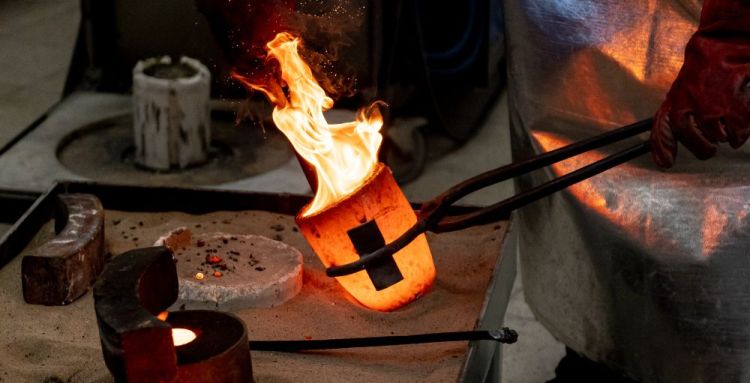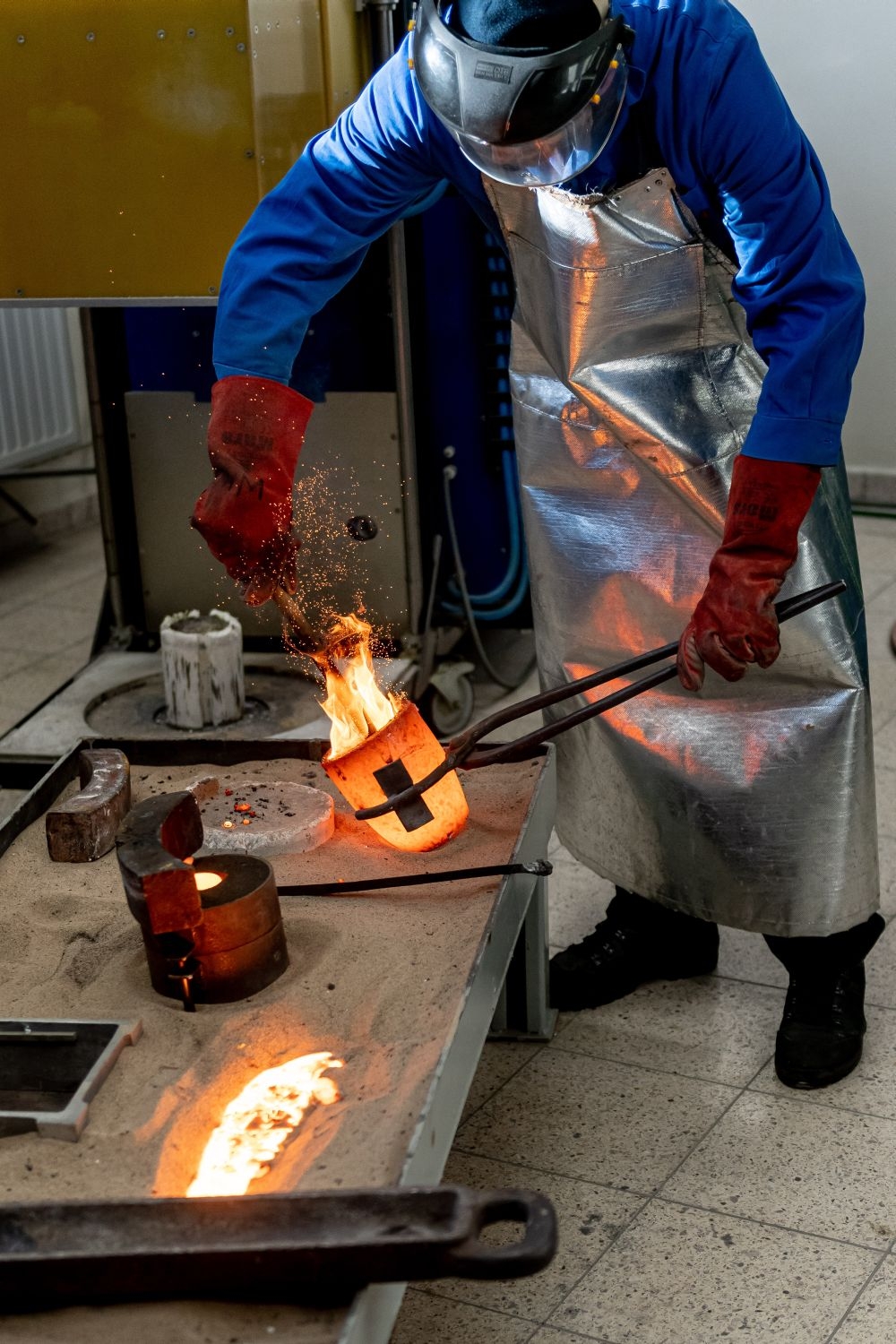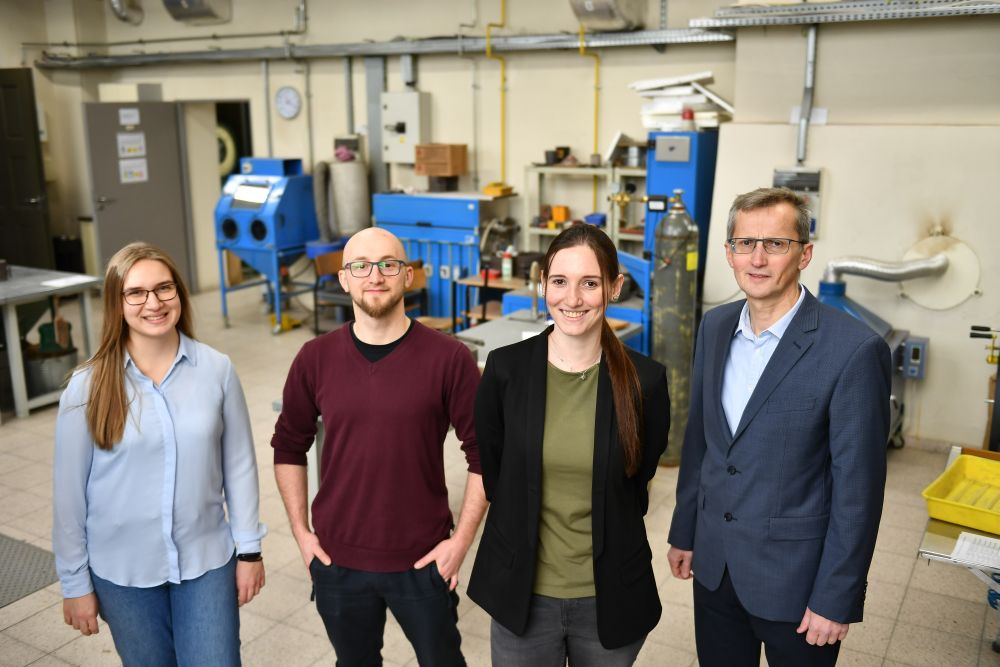YOUR BROWSER IS OUT-OF-DATE.
We have detected that you are using an outdated browser. Our service may not work properly for you. We recommend upgrading or switching to another browser.
Date: 07.01.2021 Category: general news
Are production plants – facilities consuming huge amounts of energy – doomed to the energy that comes from burning of fossil fuels? A consortium of scientists and specialists working in the industry is developing technologies that will make it possible to satisfy a large part of factories' needs in this respect. Wrocław University of Science and Technology is participating in the research.

The first new solutions will be tested at two production sites – the Romanian plant owned by the world's largest steel producer, ArcelorMittal, and the Greek dairy company Mandrekas, a famous supplier of yoghurt, among other products.
The first plant manufactures welded steel pipes featuring coloured coating. To apply the coating layer, it’s necessary to heat the material to at least 220 degrees Celsius. The other facility needs steam under the pressure of 9 bar (at 175°C) to pasteurise milk, and he has to keep its yoghurt chilled (at around 5 degrees Celsius).
A large part of the energy they need is soon to be provided by technologies that scientists and experts are already working on under the international ASTEP project (which stands for Application of Solar Thermal Energy to Processes). Involving as many as 16 partners – universities, businesses, and NGOs – from eight European countries: Spain, France, the UK, Ireland, Poland, Greece, Romania, and Cyprus, the initiative is led by Prof. Antonio Rovira from Madrid’s Universidad Nacional de Educación a Distancia (UNED), and is made possible by funding from the EU's Horizon 2020 Research and Innovation Programme.
In four years, the partners want to develop two technologies and test how they perform at production facilities. Some of them will focus on an innovative solar collector (called SunDial), which is supposed to be a reliable source of energy, also in latitudes where the use of solar energy has not been very profitable until now due to little sunshine and frequent weather changes.
 At the same time, the other partners will be building a TES (Thermal Energy Storage) heat accumulator, based on phase-change materials. The researchers from WUST’s Faculty of Mechanical Engineering, Department of Lightweight Components Engineering, Foundry Engineering, and Automation are involved in this work.
At the same time, the other partners will be building a TES (Thermal Energy Storage) heat accumulator, based on phase-change materials. The researchers from WUST’s Faculty of Mechanical Engineering, Department of Lightweight Components Engineering, Foundry Engineering, and Automation are involved in this work.
– PCM materials, i.e. phase-change materials have a property consisting in that, when you change their state of aggregation, e.g. when melting, they are capable of accumulating a part of the thermal energy supplied to them in the form of so-called latent heat. They return it in a converse process, thus becoming a source of energy – explains Anna Dmitruk, PhD, Eng., a researcher involved in the ASTEP project. – They allow us to accumulate energy for later use, for example at night, when it cannot be obtained by using solar panels.
WUST researchers are focusing on designing and manufacturing of special spatial inserts from cast-metal alloys, which are of great importance for accumulator operation. As Dr Dmitruk explains, PCM materials themselves are characterised by a rather low thermal conductivity, which is why it takes long to recharge them. Therefore, the accumulation of energy from a solar collector could take a very long time and it’s likely that the solar irradiance wouldn’t be sufficient to fully recharge the accumulator. However, such situations will be prevented by the inserts developed at WUST. – They‘re made of metals, i.e. materials with very high thermal conductivity, which lets them support heat transfer and shorten accumulator charging time – explains the researcher.
The inserts are manufactured using a precision casting process, which involves spatial casts in the form of thin-walled structures. They feature delicate openwork shapes resembling honeycombs. The prototypes were made from an alloy of zinc and aluminium – due to its good castability. Now they are only casting more of these using aluminium, but they are planning to produce them from copper, which has even better thermal conductivity. Nevertheless, the scientists must take into account the inserts’ weight, which will affect the weight of the entire heat accumulator. The smaller, the better for the whole structure.
Possible shapes of structures, and consequently the inserts, are proposed by the partners from Spain, who are conducting simulations using CFD (computational fluid dynamics) methods. At WUST’s Department of Mechanical Engineering, they are then modelled, cast, and laboratory-tested in an accumulator with a specific PCM material.
– It’s important to us all not to increase the weight of the accumulator too much and at the same time optimally shorten the charging time. Also, the issue of equalising the temperature in the accumulator matters a lot as the gradient, i.e. the temperature difference near and far away from the heat source, should be as small as possible, which guarantees that the inserts are charged efficiently.
 That’s why we’re testing different materials and shapes and fine-tuning the technological process itself – says Dr Dmitruk. – We take into account many issues, e.g. wall thickness, honeycomb "mesh" size, or the use of perforation, which will reduce the weight of the insert and improve convection, i.e. the mixing of PCM material during melting.
That’s why we’re testing different materials and shapes and fine-tuning the technological process itself – says Dr Dmitruk. – We take into account many issues, e.g. wall thickness, honeycomb "mesh" size, or the use of perforation, which will reduce the weight of the insert and improve convection, i.e. the mixing of PCM material during melting.
Once the best shape has been chosen for these structures, they will be tested in Spain and then produced in bulk at WUST, transported to Romania and Greece, and installed in the target accumulators there. It’s planned to have them ready in September 2022, after which time the on-site testing phase will begin at the production facilities.
For more information about the ASTEP project please visit its website. The progress on the project can also be followed on Twitter and LinkedIn.
The manager of the project at Wrocław University of Science and Technology is Prof. Jacek Kaczmar, and other people involved in the team’s work are Krzysztof Naplocha, PhD, DSc, Eng. University Professor, Anna Dmitruk, PhD, Eng. Beata Gal, PhD, Eng. Oliwia Trzaska, PhD, Eng. Jakub Grzęda, Msc, Eng. and Natalia Raźny, Msc, Eng.
Our site uses cookies. By continuing to browse the site you agree to our use of cookies in accordance with current browser settings. You can change at any time.